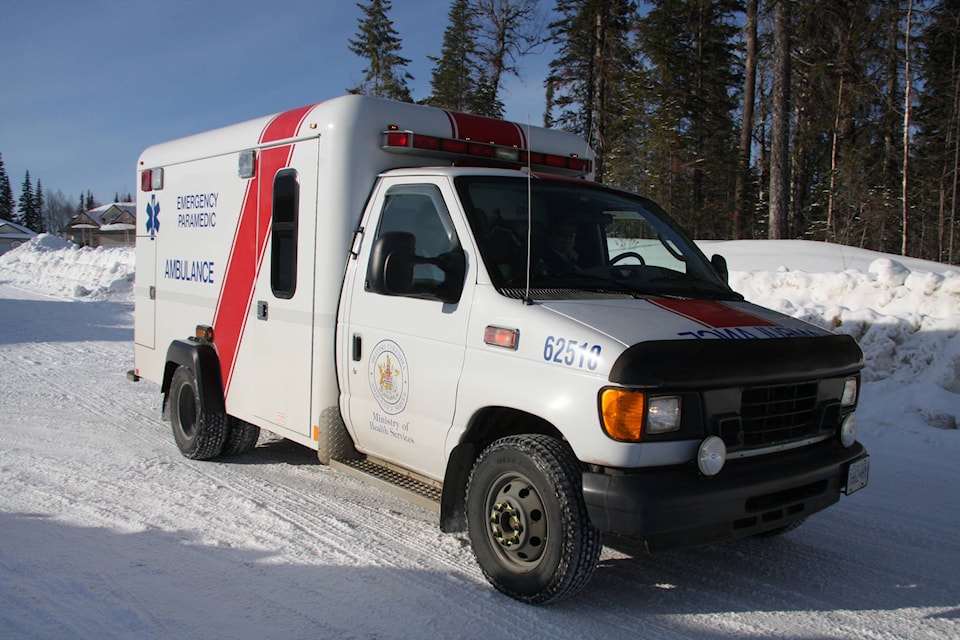Four-wheel drive vehicles may be a staple for northern residents, especially in the winter, but that doesn’t extend to the B.C. Ambulance Service.
That news comes from the service in response to a District of Houston request that ambulances be either four-wheel or all-wheel drive.
“It is a major safety risk that our emergency services vehicles may be unequipped to reach patients or hospital destinations in other communities in adverse weather conditions,” the council stated in a briefing note prepared for health minister Adrian Dix.
For Houston, that’s critical because while it has a health centre, the nearest hospitals are either approximately one hour’s drive east to Burns Lake or one hour’s drive west to Smithers.
“Many elderly residents may be unable to regularly shovel snow from their driveways, meaning that ambulances may have restricted access to private residences,” the Houston council briefing note added.
And many residents live on rural, unpaved roads that may be steep or unmaintained, the note said.
The ambulance service did experiment with four-wheel drive vehicles in rural and northern areas, and some are still in service, but overall found them unsuitable, says Shannon Miller who speaks for the service.
“The primary reason the trial was not expanded is the 4x4 ambulances presented a safety risk for our paramedics,” she said.
“The nature of a 4x4 ambulance means an increased floor height, significantly increasing the risk of injury while loading and unloading the ambulance. Musculoskeletal injuries are by far the leading cause of injury for paramedics.”
Paramedics also found the 4x4 chassis to have a much stiffer and rougher riding suspension, affecting the comfort of patients being transported in the unit.
Miller did add that the service’s ambulances are equipped with snowflake-rated tires and do carry chains.
Specific to rural areas, the service has introduced ambulances with a longer wheelbase chassis which allows for a larger fuel tank to increase range and provide additional storage space for winter gear for the paramedics, she said.
“As we continue our regular replacement of vehicles, more of these ambulances will be in rural areas such as Houston,” Miller continued.
And when ambulance crews do need assistance during winter weather conditions, such as dealing with snowed-in rural driveways, they’ll call on other first responded services.
“We greatly appreciate their assistance when we work together in this weather,” Miller said.
For injured and sick patients in remote and challenging areas, Miller said the service relies on other emergency services to transport those patients to a safe area where paramedics will take over their care and transport.
“We notify Search and Rescue for some emergency medical calls and fire first responders for others to help us get to patients as quickly and safely as possible,” said Miller.
Overall, she said the service does remind people to make sure vehicles are prepared for winter, to have proper winter tires installed, to make sure they have enough fuel, to dress for the winter and to consider not traveling when conditions are bad.
Highly visible house numbers for dark nights are appreciated, Miller said.
The Houston council had hoped to discuss the issue with Dix at the Union of B.C. Municipalities convention in Vancouver the end of September but a meeting didn’t take place.
The Houston request, however, was submitted to the health ministry for further comment.
